One of the highlights of our recent round trip through Hungary was our visit to the Hortobagy National Park, registered on the UNESCO World Heritage List since 1999. The park is situated at a distance of 190 km east of Budapest, and consists of a vast area of plains and wetlands (75,000 ha).
I have always been fascinated by stories about the spectacular Great Plain and the endless Puszta, but what I saw exceeded all my expectations.

It was a warm and sunny day in October, off-season, and we were the only foreign guests visiting the famous Mata Stud, one of the oldest studs in Hungary, with a history that dates back more than 300 years. Many races, professional trainings and events take place here, like the famous Hortobagy Equestrian Days
By the way, driving through the Great Plain, we had also expected to catch the largest European population of cranes during their rest in Hortobagy before taking off to their final destination in Africa, but it was too early – we only saw four cranes flying in perfect harmony above our heads.
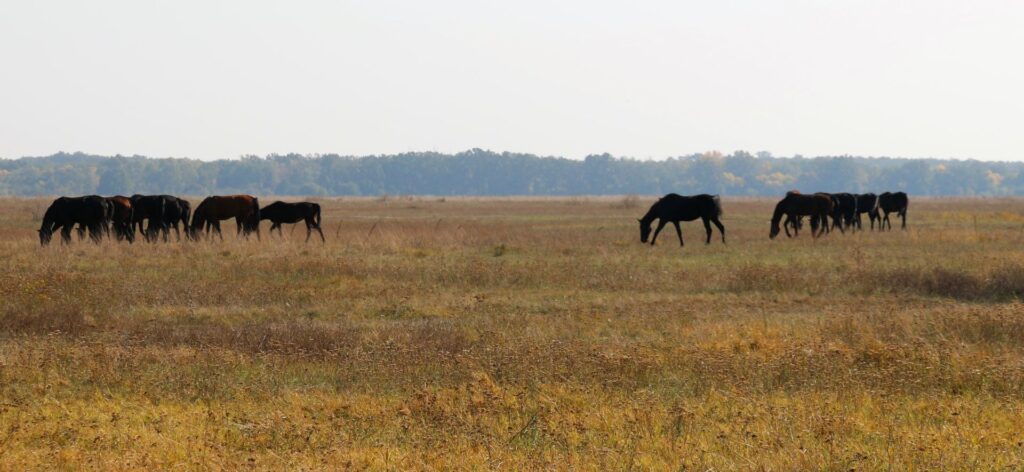
But let me tell you something more about Mata Stud, the center of horse riding in the eastern Hungarian region. The stud owns around 270 horses and its main priority is the gene conservation and breeding of the Nonius breed that was declared as „national treasure“ in 2004. Its history is impressive: it was used as farm horse, but also as artillery and saddle horse until World War II. Nowadays, it is a great cart horse characterized by placid temperament and steady performance. Its skills as a saddle horse are unique..
We admired the beautiful black horses in the stables, but we also saw herds of horses, grazing freely in the open.
Of course, we could not wait to start the 1.5 hour „Puszta Carriage Tour“. We took place in an open vehicle that was drawn by four Nonius horses and expected a tour that would enable us to see the astonishing beauty of the unbroken horizon of the Puszta, to watch an impressive horse ride show and to meet indigenous Hungarian animals in their natural surroundings.And we didn’t get disappointed!
Can you imagine how wonderful it is to make a ride with a horse-drawn carriage into the endless Puszta?
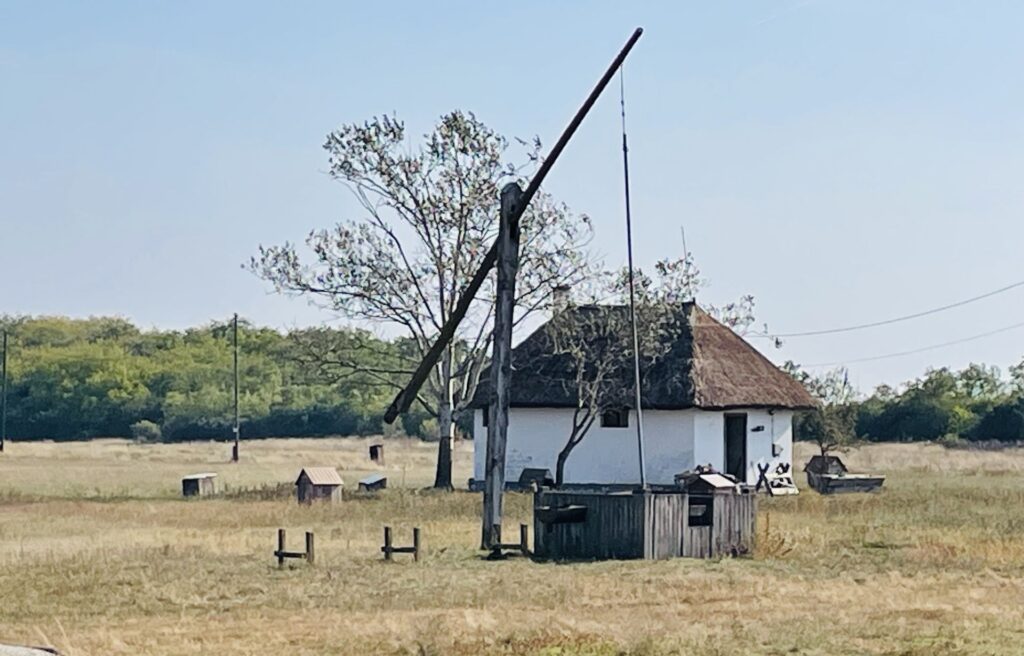
Our German-speaking guide explained us a lot about the traditional farm society in this area and the carriage stopped frequently. We saw shepherds’ houses, traditional wells and stables, but also the „sitting at the bottom“ barns, quarters of the racka sheep.
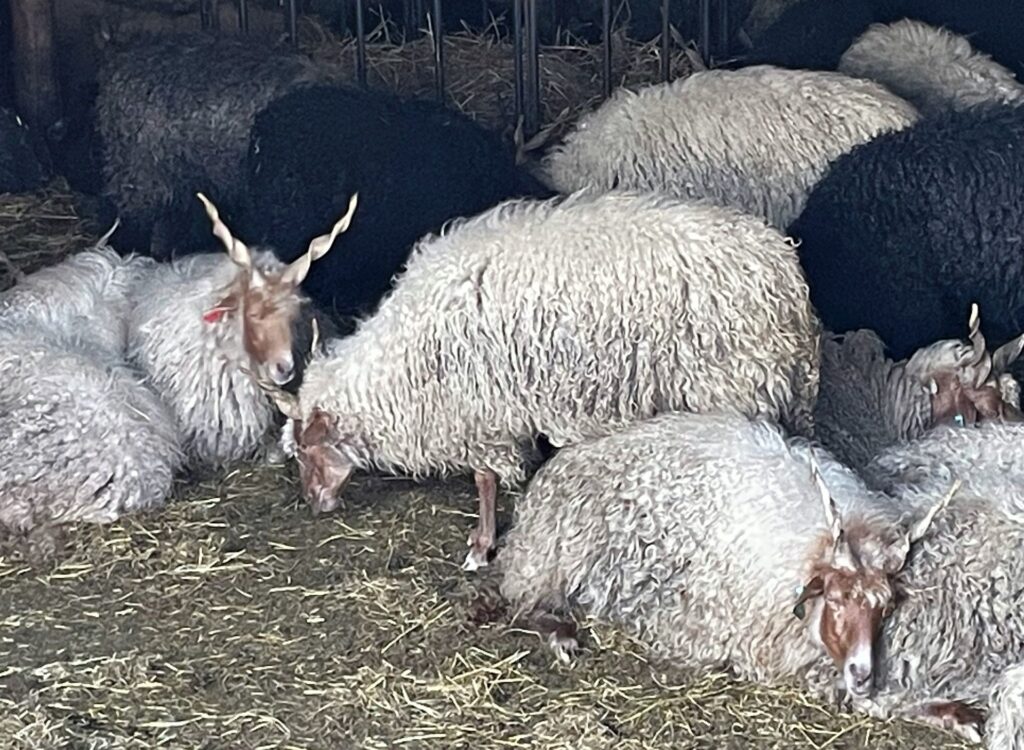
Racka is a sheep breed with 30 cm long curly – black or white – fur and corkscrew shaped horns. The sheep stay here around the year and, depending on the weather and the season, shepherds drive them out to graze during the day.
We also had the opportunity to watch a spectacular horse riding show that demonstrated the high skills and perfect harmony between the „csikos“ (horsemen) and their horses.
These Hungarian „cowboys“ continue carrying out their ancestors’ profession in the same way as it used to be through centuries. They even wear the same traditional clothes as 200 years ago, with wide blue trousers and blouses, and black hats.
It was also interesting to see that they don’t use traditional saddles, but just a piece of padding that is barely clinched on the horse’s back.

Although this show was meant for tourists, it didn’t seem touristic at all. It was quite clear that the „csikos“ really enjoyed showing their skills and traditions.
But what did the „csikos“ demonstrate? First, our carriage was approached by a running group of five horses: one man stood on the backs of two horses while controlling three more horses in front of him. To see him galloping around with the five horses was an amazing display of horsemanship.
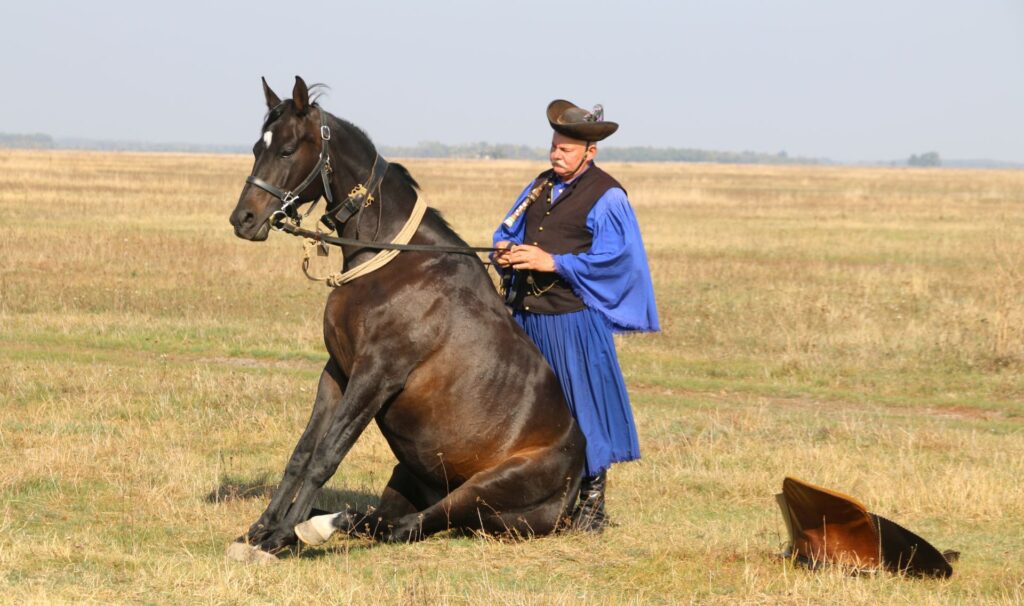
Second, three „cowboys“ started to ride around the carriage. They showed us some fancy dressage by ordering their horses to lay down and then even to sit on their butts like dogs. After the show, we could approach the horses and caress them. What a beautiful animals!
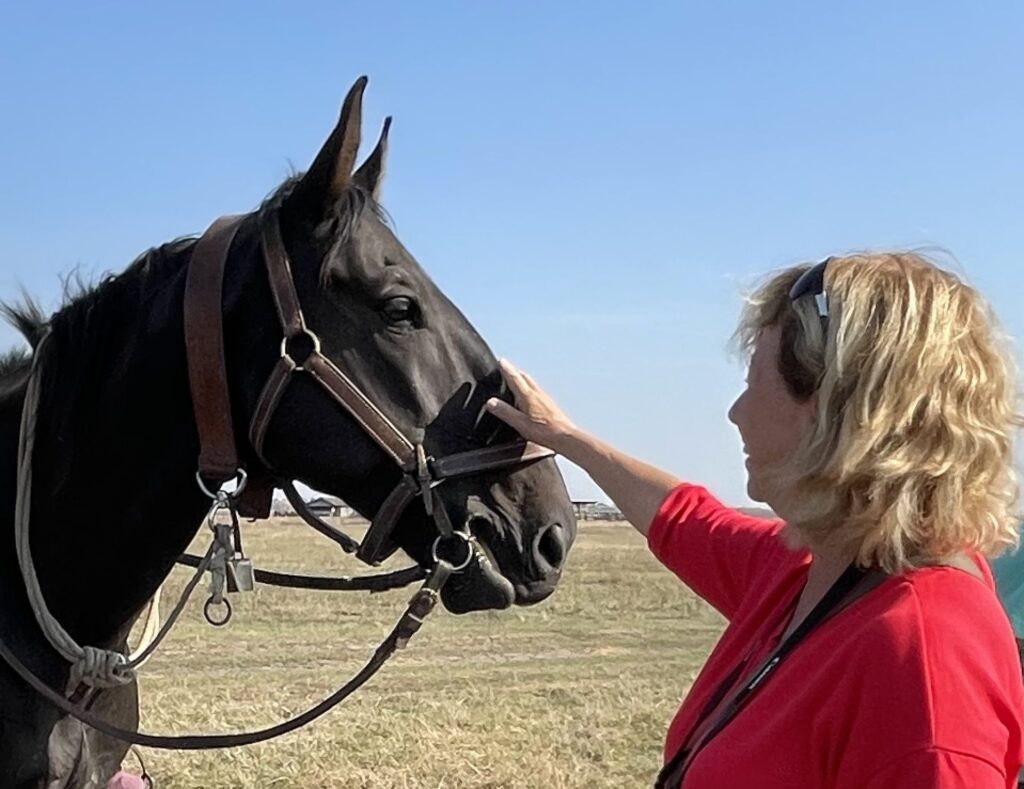
But there were other wonderful things to see. We stopped near a herd of Hungarian grey cattle with huge horns. It was around noon, the time when they rest, as they graze during the day. No wonder that these animals were the topic of many Hungarian poems.
Somewhat farther away, three water buffaloes were wallowing in the mud. We had to stay away from them, as they can be rather dangerous.
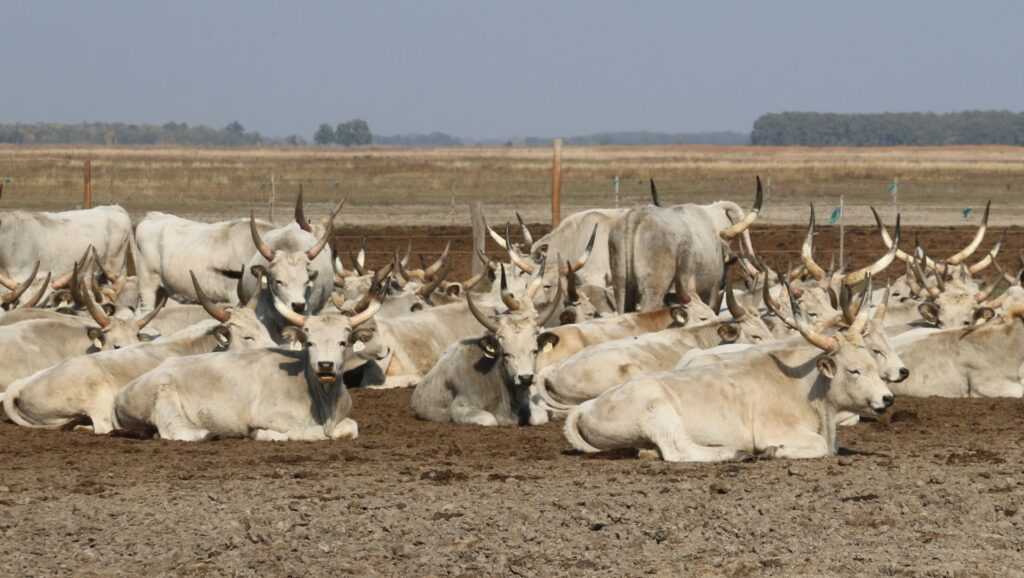
Riding through this „big nothing“, this authentic Hungarian landscape, we got an idea how farmers traveled through the countryside a few centuries ago.
We drove to the village of Hortobagy with its Nine-Hole-Bridge, the market with local crafts and the „csarda“, a traditional inn. It all appeared to be rather touristic and commercial, but from here we had to take a bus to the Wild Animal Park.
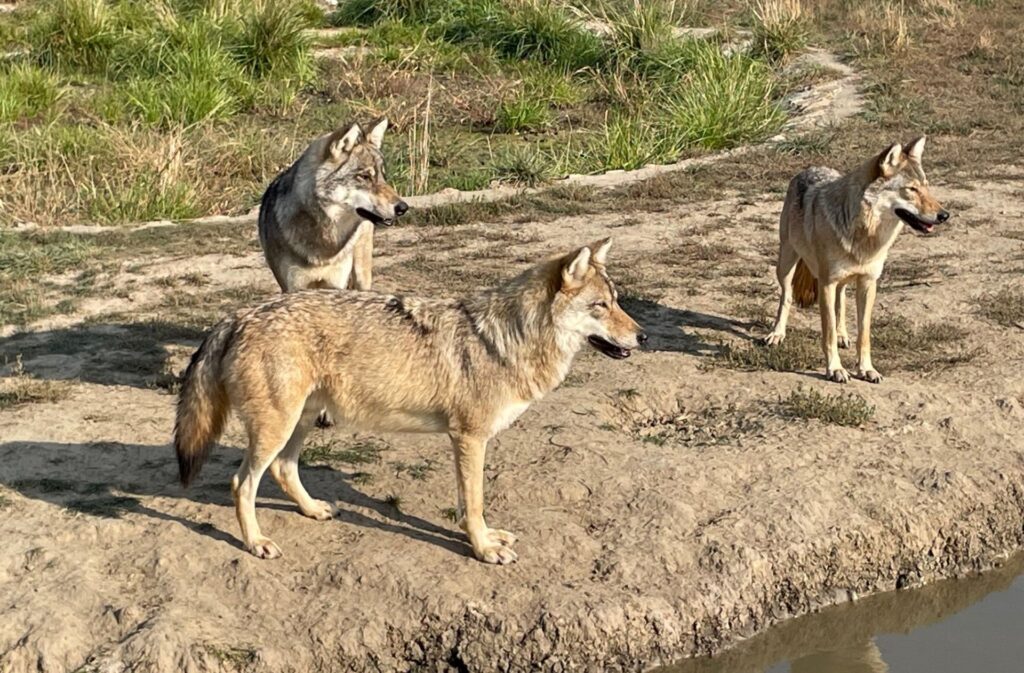
It was disappointing to see that this park was a kind of small zoo with captured animals, not animals „in the wild“. We saw wolves, foxes, wild boar, but also pelicans, egrets and other birds. It was particularly sad to see eagles, vultures, owls and other big birds in cages. How can this be allowed by UNESCO?
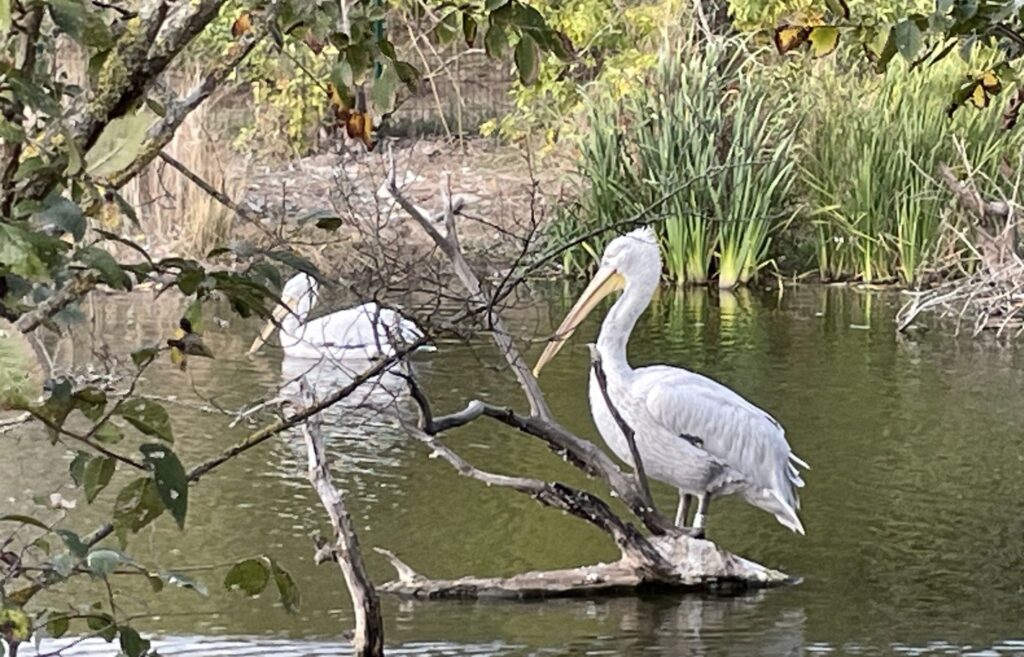
But altogether, we had a wonderful relaxing day in Hortobagy. So, if you plan a travel to Hungary, don’t forget to visit this amazing national park!
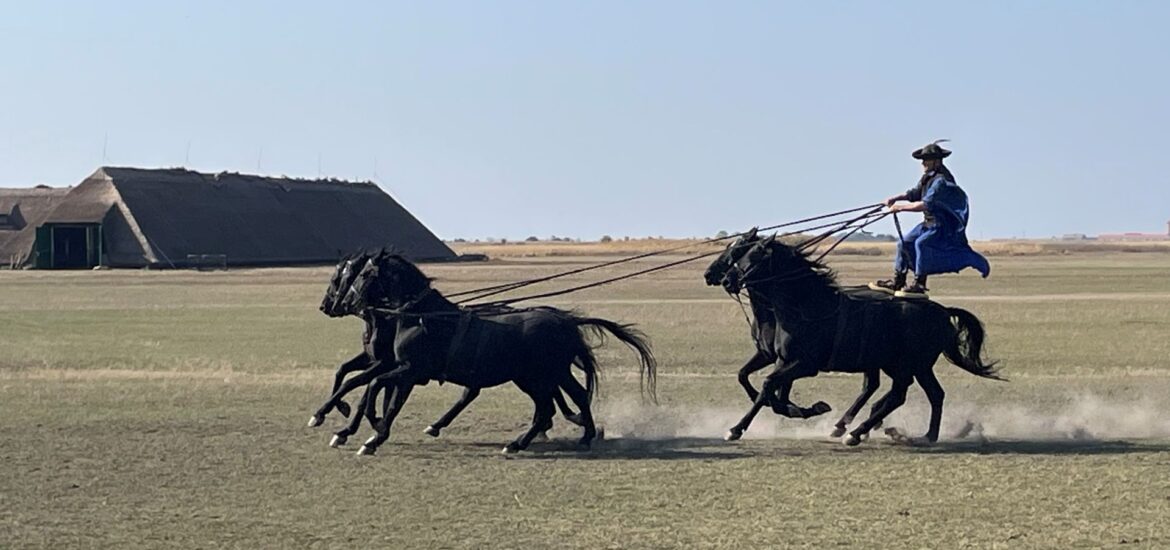
Very much enjoyed this. As soon as I started reading, I thought of the Chaco – the grasslands of Argentina, and the cowboys there – the Gauchos. So interesting to see similarities in such distant parts the earth: the wide pants, the expansive grasslands, the pride of the cowboys. A lovely reminder that we’re not so different after all.
(Can’t seem to paste a photo here but if you look up the Guachos, you’ll see the similarity.)
The Gauchos are known for their traditional dance – the malambo. I wonder if the hungarian cowboys also have a specific traditional dance.
Geweldig. Mooie foto’s. Wij zijn er ook geweest en het gebied heeft een grote indruk op ons achtergelaten.
Pracht verhaal en ik herleef de verhalen van vroeger over de Hongaarse bevolking en hun paarden kunsten. Het nodigt uit om zelf daar naartoe te gaan en beleven.